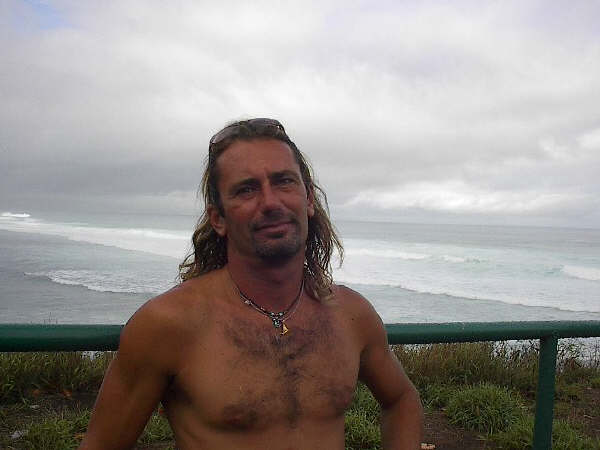All went like predicted yesterday.
The early morning hours were glassy. Then around 8-9 you could see a lump in the waves and by 10am you could see a wind line slowly approaching and bringing 5-10mph of onshore wind.
It was still surfable, but definitely not as clean as earlier. The time stamp of the photo below is 9.30 the reason I post it is because it illustrates that lump I was talking about. More than on the wave, look at the back of it...

That's how the waves and the water looked yesterday instead thanks to the offshore wind. Wonderful image by Brian Caserio .
On today's buoys graphs, I pointed out the peak time of this swell, so you guys can check the travel time. As you can see, GP's rule of 12h at 16s and 16h at 12s from the NW buoy to Maui did apply well in this case.
Interesting how this swell started with shorter period (11) then it is now (14 at the NW).
The longer the period the faster the waves travel, so how is this possible?
Answer below, because I need the wind map to explain.
Below is today's wind map and to be precise I should have used one from a couple of days ago, but it was very similar so you guys bear with me.
The NW buoy is roughly by the end of that big fetch I circled. That small fetch just NE of Japan is still too far and small to be relevant right now (unless you're in Japan and want to know where all that snow came from...). I didn't check the maps for the next 7 days, but I'm pretty sure that is going to be relevant next week.
So, back to the NW buoy. The period of a swell is a function of many factors. The most important of which, IMO, is the wind strength. In this case it happened that the winds by the end of the fetch were less strong then the winds by the beginning of the fetch. But because the end of the fetch was so close to the NW buoy, the 11s period sets hit it before the 14s ones, that needed time to catch up.
I hope the illustration I added clarifies the concept.
Same goes with the sizes of course. Mixed sizes and periods is usually not a good thing for the surf (bit still MUCH better than flat!), because the breaking patterns are not consistent. Inside, outside, wide, narrow... you never know where to sit in the lineup in these cases. But it does help spread out the crowd at the same time.
Ideally, you wonna have one storm at the time and far away from your surf spot so that the different periods will nicely space out and you can count on the longer period to arrive first and be less consistent and the shorter period to arrive later with more consistency. A place like that is the Indian Ocean and Indonesia. I've been there 4 times and I've not seen overlapping swells and mixed breaking patterns that I can remember. I'm sure it happens, but it's rare. That's why I keep going back.
Of course for the surf to be good, you have to add the local wind component. And that's why, we now get back to our morning call and analyze that. Well I hope that after all I said above, it's clear now for you guys that this swell is not going to be as clean as the previous one. But the early morning of today will offer light offshore to no wind, so that will still make it a better than average day.
Later on, light trades will pick as the noon MC @ 2km map shows below (not enough for windsurfing)

Have fun in the sun everyone!
PS. All the sources for this post are permanently linked in the links section on the right of this blog.












No comments:
Post a Comment